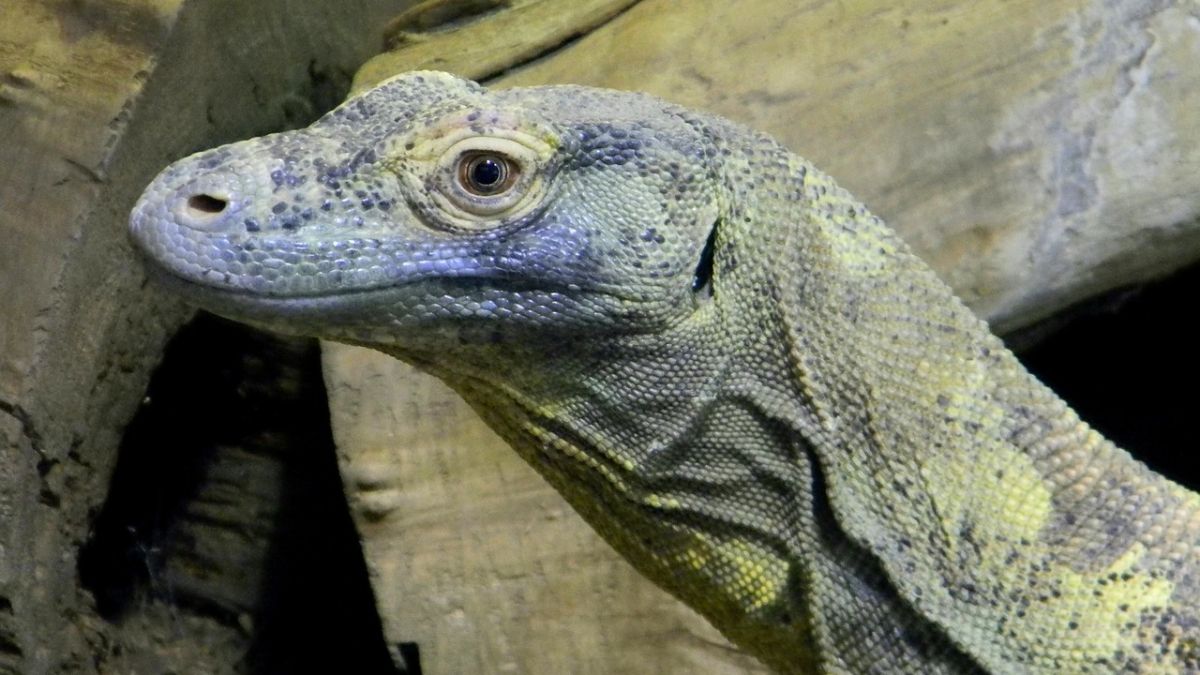Komodo Dragons, the iconic apex predators native to the Indonesian islands, are renowned for their immense size and intriguing behaviors. These formidable reptiles, scientifically known as Varanus komodoensis, hold a unique place in the natural world, boasting several remarkable characteristics that distinguish them from other species.
Enormous Size
Komodo Dragons are the largest lizards on Earth. These impressive reptiles can reach lengths of up to 10 feet (3 meters) and weigh as much as 150 pounds (70 kilograms). Their sheer size contributes to their status as apex predators in their native habitats.
Formidable Hunters
As carnivorous predators, Komodo Dragons possess powerful jaws armed with serrated teeth, enabling them to seize and tear apart prey. They feed on a variety of animals, including deer, pigs, water buffalo, and occasionally smaller Komodos, utilizing a combination of stealth and ambush tactics in their hunting endeavors.
Venomous Bite
Contrary to earlier beliefs that their saliva carried toxic bacteria causing infections, recent studies have revealed that Komodo Dragons do possess venom glands. The venom contains toxins that disrupt blood clotting, leading to increased bleeding and shock in prey, aiding in subduing them after a successful ambush.
Island Endemics
These majestic creatures are endemic to a few Indonesian islands, primarily Komodo, Rinca, Flores, Gili Motang, and Gili Dasami. The limited range of their natural habitat makes them vulnerable to habitat loss and human interference.

Solitary Behavior
Komodo Dragons are largely solitary creatures, often hunting and living alone except during the mating season or when juveniles stay close to their mothers for protection and guidance. Their solitary nature minimizes competition for resources within their ecosystem.
Exceptional Adaptations
They exhibit remarkable adaptations to their environment. Their keen sense of smell, aided by a forked tongue used to detect scent particles in the air, helps them locate prey from several miles away. Their rough, armored skin provides protection against injury and aids in temperature regulation.
Varied Diet
Komodo Dragons are opportunistic feeders. Despite their reputation as fearsome predators, they scavenge more frequently than actively hunt. They consume carrion, and their powerful digestive systems allow them to ingest large chunks of meat and even bones.
Threatened Status
While once considered vulnerable, recent conservation efforts have helped stabilize their population. However, Komodo Dragons still face threats due to habitat loss, poaching, and conflicts with humans. Conservation initiatives aim to safeguard their habitats and control human interaction to ensure their survival.
Unique Reproduction
Females lay eggs in nests dug into the earth, and these nests serve as incubators for the eggs. Interestingly, the sex of the hatchlings is determined by the incubation temperature, with warmer temperatures resulting in males and cooler temperatures producing females.
Evolutionary Significance
The evolutionary lineage of Komodo Dragons dates back millions of years. They belong to the monitor lizard family, a group of reptiles with ancient origins, representing a fascinating aspect of reptilian evolution and adaptation.
Komodo Dragons stand as magnificent symbols of evolutionary prowess and ecological significance. Their impressive size, predatory abilities, and unique adaptations make them captivating subjects for scientific study and conservation efforts. As these iconic reptiles continue to navigate a changing landscape, efforts to protect their habitats become increasingly vital to ensuring the survival of these majestic creatures for generations to come.










